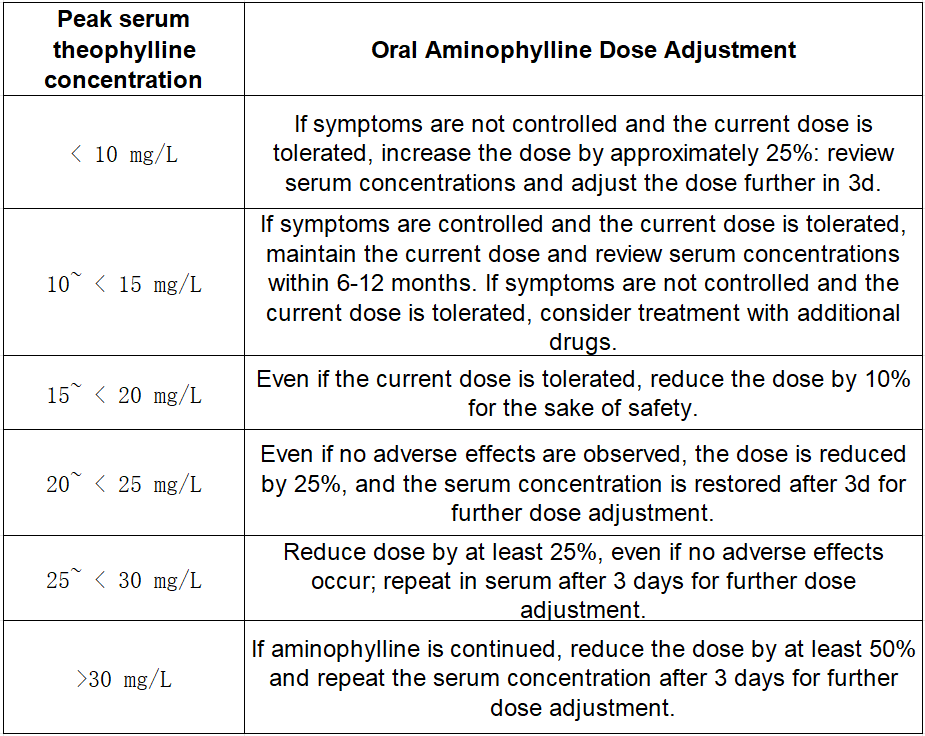(1)Any time signs or symptoms of theophylline toxicity occur;
(2)For those with persistent symptoms of wheezing, before a dose increase is proposed in consideration of the possibility that blood levels may be below therapeutic concentrations;
(3)After administration from initiation of therapy to adjustment to the final dose;
(4)When a change in treatment regimen is required due to the development of a new disease, worsening of a chronic disease, or a condition that may alter theophylline clearance;
(5)Infants under 1 year of age with immature theophylline metabolic pathways should be given special attention to dosage and monitoring of serum theophylline concentrations (Recommendation Class B).
See the following table for oral theophylline dosage adjustments based on blood concentration as a guide (Recommendation Class A)

Table 6 Table of oral aminophylline dosimetry based on blood concentration as a guide
The narrow therapeutic window for theophylline limits its intravenous use in pediatrics, but its safety for oral administration and its multimodal pharmacological effects have maintained its place in therapeutic areas such as asthma, where heterogeneity is evident.
Intravenous use of theophylline in the treatment of acute asthma exacerbations should be guided by a balanced approach based on clinical improvement, alertness to adverse effects, and blood levels, with the goal of achieving safe and rational use.